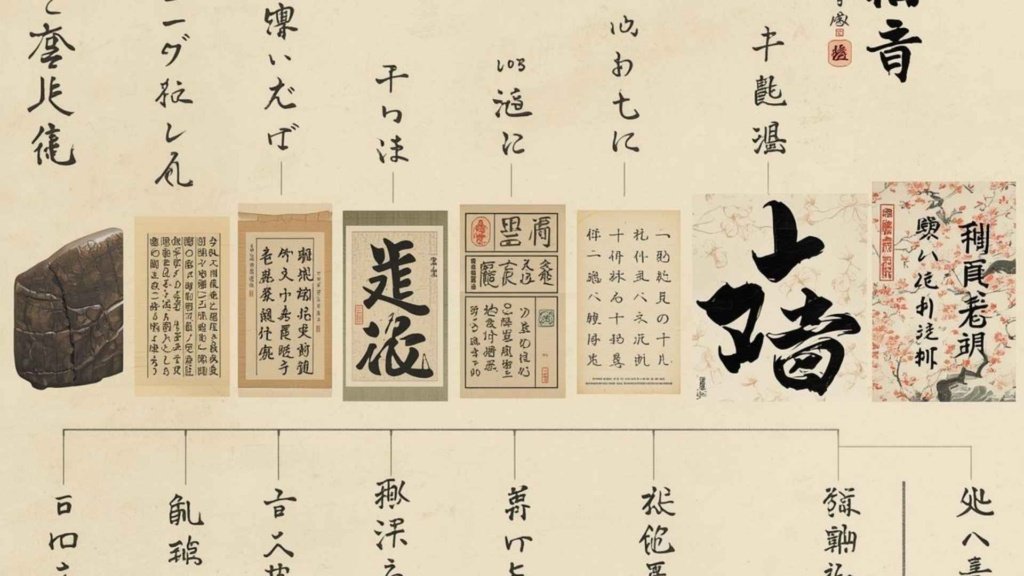Learning Japanese can feel overwhelming, especially when it comes to Kanji (漢字). Often seen as the most complex part of the language, Kanji is also the most rewarding. It forms the backbone of Japanese writing, enabling learners to read, write, and understand the language in depth. While Hiragana and Katakana focus on sounds and grammar, Kanji carries meaning, making it essential for true fluency.
At TLS – The Japanese Language School, we provide step-by-step guidance to mastering Kanji, combining structured lessons, practical exercises, and real-life applications. Whether your goal is travel, study, or work in Japan, understanding Kanji will deepen your connection to Japanese culture and communication.
What is Kanji?
Kanji (漢字) are logographic symbols borrowed from Chinese, with each character representing a distinct meaning rather than just a sound. Unlike Hiragana or Katakana, which are phonetic, Kanji conveys ideas, objects, actions, and concepts in a single character. Click here

Examples:
- 水 (Mizu) – Wate
- 山 (Yama) – Mountain
- 食 (Shoku / Taberu) – Eat / Food
Many Japanese words are formed by combining multiple Kanji, creating rich layers of meaning. Learning Kanji requires understanding both the definition and pronunciation, which can change depending on context. Official Website
Mastering Kanji opens the door to Japanese literature, culture, and daily communication. TLS teaches Kanji in a practical, step-by-step approach to help beginners confidently read and write.
History of Kanji
Kanji was introduced to Japan from China around the 5th century AD, marking a significant transformation in Japanese writing. Initially, scholars used Kanji to write in Chinese. Over time, Japanese adapted the characters to fit their own grammar and vocabulary.

To complement Kanji, Hiragana and Katakana were developed to express sounds and grammatical elements Kanji alone could not represent. Today, Kanji appears everywhere—from books, newspapers, and official documents to street signs, menus, and digital communication.
TLS connects the historical background of Kanji with modern learning methods, helping students understand both meaning and usage.
Why Learn Kanji?
Learning Kanji may seem difficult, but the benefits are immense:
- Improved Reading Skills: Most Japanese texts mix Kanji and Kana. Recognizing Kanji allows smooth reading and better comprehension.
- Clear Communication: Kanji conveys precise meaning. For example, “はし” could mean bridge (橋) or chopsticks (箸). Kanji eliminates ambiguity.
- Cultural Insights: Kanji carries historical and symbolic significance, revealing Japanese traditions and thought patterns.
- Career Opportunities: Knowledge of Kanji is vital for academics, professional communication, and business in Japan.
At TLS, we help learners progress from basic to advanced Kanji, making the process manageable and enjoyable.
Types of Kanji
Kanji can be divided into three main categories:
- Kunyomi (訓読み): Japanese reading based on meaning. Example: 山 (Yama) – mountain.
- Onyomi (音読み): Chinese-origin reading, often used in compound words. Example: 山 (San) in 富士山 (Fuji-san).
- Radicals (部首): Components of Kanji that hint at meaning or pronunciation. Example: 氵 (water) or 木 (tree).
Understanding these categories helps learners decode complex characters more efficiently. TLS emphasizes Kunyomi, Onyomi, and radicals to make Kanji easier to memorize and use.
Kanji for Beginners
Starting with frequently used Kanji is practical for everyday reading and communication. Common beginner Kanji include:
| Kanji | Meaning | Reading (Kunyomi / Onyomi) |
| 日 | Sun / Day | ひ (Hi) / ニチ (Nichi) |
| 月 | Moon / Month | つき (Tsuki) / ゲツ (Getsu) |
| 火 | Fire | ひ (Hi) / カ (Ka) |
| 水 | Water | みず (Mizu) / スイ (Sui) |
| 木 | Tree / Wood | き (Ki) / モク (Moku) |
| 山 | Mountain | やま (Yama) / サン (San) |
| 川 | River | かわ (Kawa) / セン (Sen) |
| 人 | Person | ひと (Hito) / ジン (Jin) |
| 口 | Mouth | くち (Kuchi) / コウ (Kou) |
| 食 | Eat / Food | たべる (Taberu) / ショク (Shoku) |
Mastering these characters gives learners the foundation to read signs, menus, and simple texts confidently. TLS beginner courses combine writing practice, reading exercises, and interactive activities to ensure retention and practical use.
Tips to Learn Kanji Effectively
Kanji can seem intimidating, but consistent practice and smart strategies make it achievable:
- Learn Radicals First: Radicals help understand meanings and spot patterns.
- Use Mnemonics: Visual or story-based associations make Kanji memorable.
- Practice Writing: Stroke order improves memory, clarity, and speed.
- Combine Reading and Listening: Contextual reading with audio reinforces recognition.
- Daily Practice: Even 10–15 minutes a day improves retention.
- Review Regularly: Repetition strengthens long-term memory.
TLS incorporates these techniques through interactive lessons, quizzes, and exercises to make Kanji learning engaging and effective. JLPT December 2025 Online Registration
Kanji in Daily Life
Kanji is everywhere in Japan:
- Street Signs: 東京駅 (Tokyo Station), 駐車場 (Parking Lot)
- Menus: 牛肉 (Beef), 野菜 (Vegetables), 魚 (Fish)
- Documents: Newspapers, forms, government notices
- Digital Communication: Emails, social media, chat messages
Learning Kanji allows learners to read, navigate, and communicate confidently in daily life. TLS uses practical examples and exercises to ensure students apply their knowledge immediately.
How TLS Helps You Learn Kanji
TLS makes Kanji learning structured, interactive, and enjoyable:
- Step-by-Step Curriculum: Start with basics and progress to advanced characters.
- Experienced Instructors: Personalized guidance for complex Kanji.
- Interactive Exercises: Games, writing practice, and quizzes for retention.
- Flexible Learning: Online or in-person options to fit your schedule.
Our approach transforms Kanji learning into a rewarding journey, empowering students to read, write, and communicate effectively. JLPT July 2025 Results Are Out
FAQs About Kanji
1. What is Kanji?
Kanji are logographic characters representing meanings, essential for reading and understanding Japanese.
2. How is Kanji different from Hiragana and Katakana?
Hiragana and Katakana represent sounds; Kanji represents meaning.
3. How long does it take to learn Kanji?
Basic Kanji can be learned in a few weeks with daily practice; mastery takes longer.
4. Can I learn Kanji without knowing Hiragana or Katakana?
Starting with Kana is recommended to understand Kanji readings and sentence structure.
5. What are Kunyomi and Onyomi?
Kunyomi is the Japanese reading; Onyomi is the Chinese-origin reading.
6. How do radicals help?
Radicals indicate meaning or pronunciation, aiding in memorization.
7. Tips for memorizing Kanji?
Use mnemonics, practice stroke order, combine reading and listening, daily exposure, and regular review.
8. Where is Kanji used?
Street signs, menus, documents, books, and digital communication.
9. Can adults learn Kanji easily?
Yes! With structured lessons and consistent practice, adults can master Kanji.
10. How does TLS help?
TLS provides a step-by-step curriculum, interactive exercises, experienced instructors, and flexible learning options.
Conclusion
Kanji is the heart of Japanese writing. While it can seem challenging, structured learning, consistent practice, and practical exercises make mastery achievable. JLPT N1 vs N2 2025
TLS equips learners with the techniques, support, and tools to read, write, and use Kanji confidently. Learning Kanji at TLS builds a strong foundation for lifelong Japanese language skills.Visit Us:
TLS – The Japanese Language School
2/81-82, 2nd Floor, Lalita Park, Gali No – 2, Laxmi Nagar, New Delhi – 110092
Call: +91 8700956038
Email: tls@teamlanguages.com



